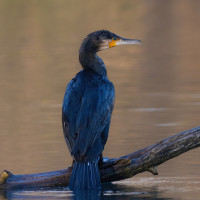Opis
Lake Uluabat has lots of sheltered bays which are gathering areas for water birds all year round. You can see big flocks of birds, especially in winter in those sheltered bays. Also, during the breeding season, it is possible to see czapla purpurowa, rybitwa białowąsa , kormoran mały and many more on the reed beds. pelikan kędzierzawy is another flagship species in the lake. They are gathering close to the fishermen who feed them. Also, pelikan różowy is one of the most impressive species when thousands of them pass through the lake area in migration time. głowienka is another important species that you can see in the lake with big flocks of them in winter. During the cold winter in the Western Palearctic, thousands of sterniczka have been counted in the lake area. So, it seems that the lake is one of the most important wetlands in Turkey for this species. Also, around the lake, there are many habitat types where you can spot passerines and shore birds, too. This is a nice wetland ecosystem with cultural heritages and landscapes. It would be nice to go there to see such a characteristic wetland in the northwest part of Turkey.
Szczegóły
Dostęp
You can reach Lake Uluabat by car. It isn't far from the city center of Bursa province. You can go to the villages by public transport but you need to be sure whether it is suitable for you. It takes a lot of time to drive around the lake because it is a vast area. Sometimes road conditions could be risky because of the weather conditions, especially in winter and rainy seasons. Zoom in on the map and click on a P in the map for directions or coordinates.
.jpg)
.jpg)
.jpg)




